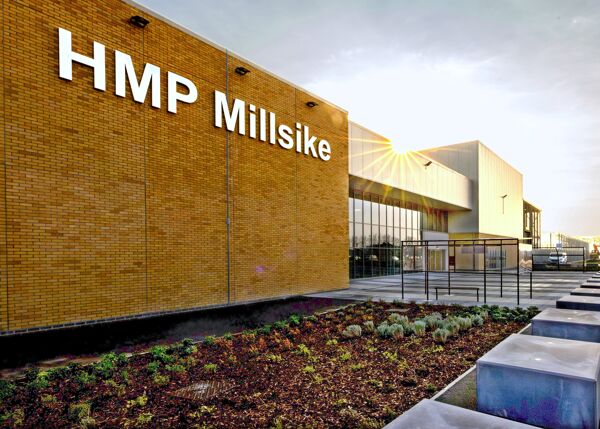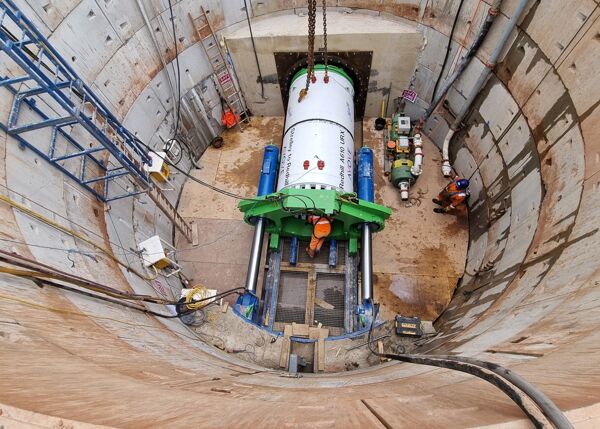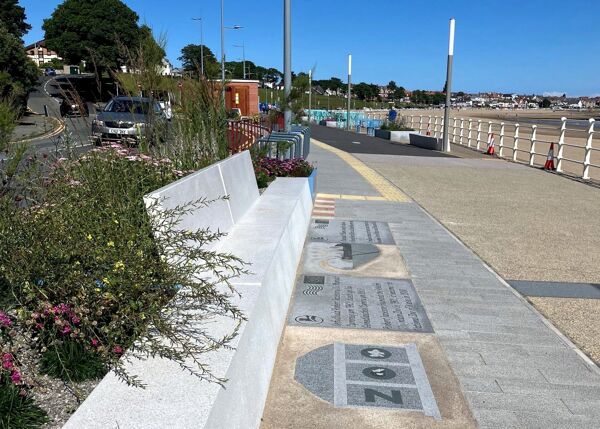
NEC has been used to deliver a 16.3 km strategic water pipeline around Nottingham, UK. Client Severn Trent Water let the Strelley to Redhill water trunk main project to contractor Avove in January 2024 under a £32 million NEC4 Engineering and Construction Contract (ECC) Option C (target contract with activity schedule). The work was successfully completed on time and under budget in March 2025.
The new 700 mm diameter pipeline links the Derwent Valley Aqueduct at Strelley Reservoir west of Nottingham to Redhill Reservoir north-east of the city. It boosts the resilience of water supply to 180,000 people in north Nottinghamshire by providing an extra 25 Ml of water per day, reducing reliance on boreholes.
Most of the pipeline was built from ductile iron pipe laid in an open trench across agricultural fields, residential areas, car parks, business parks and Severn Trent land. Where the route crosses the A610 dual carriageway near the M1, and Hucknall Lane and Robin Hood railway line at Bestwood, two 1.5 m diameter reinforced concrete tunnels containing 560 mm diameter polyethylene pipes were used. The pipe-jacked tunnels were excavated with full-face tunnelling machines working from 7 m deep, concrete-segment-lined shafts.
Other works included building a twin-span pipe bridge over the River Leen at Bestwood Road, and extensive monitoring and protection of wildlife habitats and watercourses. The project was shortlisted for the Water Project Award in the 2025 British Construction & Infrastructure Awards.
Experienced user
Severn Trent is an experienced user of NEC contracts. Recent major NEC-procured projects include the £40 million Stoke Bardolph advanced anaerobic digestion plant near Nottingham and the £9 million Finham biogas-to-grid scheme.
Senior project manager Neil Russell says Severn Trent chose NEC4 ECC Option C for the Strelley to Redhill water main because it gave the best balance of cost certainty and collaboration. ‘The target cost with pain/gain share meant both Severn Trent and Avove had a joint interest in delivering the scheme efficiently.’
He says the contract encouraged transparency, with open-book cost management meaning Severn Trent could see exactly where money was being spent. ‘It also provided flexibility, with changes such as design refinements at Redhill Reservoir and the switch from horizontal directional drilling to pipejacking for the critical crossings to be managed fairly and quickly.’
Russell says the NEC requirement on the parties to act in ‘spirit of mutual trust and co-operation’ ensured there was full collaboration throughout the works. ‘In addition, the NEC processes of early warnings, regular programme reviews and joint risk management reduced surprises and built trust.’
He says the contract also incentivised efficiency. ‘With both parties sharing in the benefits of finishing early or under budget, this drove innovation and value-engineering. In short, ECC Option C supported our aim of delivering a major trunk main safely, on time and within budget.’
 Collaborative approach
Collaborative approach
Avove senior project manager Nicholas Broughton says ECC Option C promoted open-book collaboration between the parties from the outset. ‘A “one team” culture was embedded by the client, contractor and supply chain being co-located for critical planning windows, such as the two tunnelled crossings, which accelerated approvals and mitigated risk.’
He says the NEC early warning process was consistently used as intended. ‘Risks were notified promptly, debated transparently and recorded with clear mitigation owners. A practical learning was to log potential programme pressures early, even where mitigation was in progress, to ensure shared awareness. Weather-related risks also highlighted the value of keeping early warning notices open until fully resolved – closing too early risked losing sight of residual exposure.’
Broughton says compensation were generally well-managed, with agreement on principles before cost build-up to avoid downstream disputes. ‘Where compensation events arose from client-led changes, NEC’s defined cost approach gave confidence in transparency. We found that rapid pricing workshops worked better than protracted correspondence – aligning commercial and delivery teams early helped to maintain momentum.’
He says the open-book approach under ECC Option C gave the client visibility of actual cost build-up and incentivised the contractor to deliver efficiencies. ‘Collaborative use of the pain/gain share mechanism reinforced the joint drive to deliver under budget and within time. This incentivised programme-driven decision making rather than siloed behaviours.’
Broughton says regular programme submissions provided an auditable baseline for assessing early warning notices and compensation events. ‘NEC’s focus on an accepted programme proved critical in managing client confidence and maintaining momentum.’
Lessons learned
In terms of lessons learned from the project, Broughton says NEC4 worked best where discipline in process – such as timely early warning notices, programme updates and compensation event notifications – was coupled with informal collaborative behaviours. ‘The contract provided the framework, the relationship delivered the outcomes.’
He says the project demonstrated that target cost incentives drive innovation when both parties have confidence in cost data. ‘Going forward, even tighter integration of design approvals into NEC timescales could reduce programme pinch-points.’
Benefits of using NEC
- NEC4 ECC Option C gave the client the best balance of cost certainty and collaboration, resulting in this challenging 16 km long project being delivered on time and under budget.
- NEC pain/gain share mechanism incentivised efficiency, drove innovation and encouraged value-engineering.
- NEC open-book approach gave the client full visibility of where the money was being spent throughout the project.
- NEC processes of early warnings, regular programme reviews and joint risk management reduced surprises and built trust.




